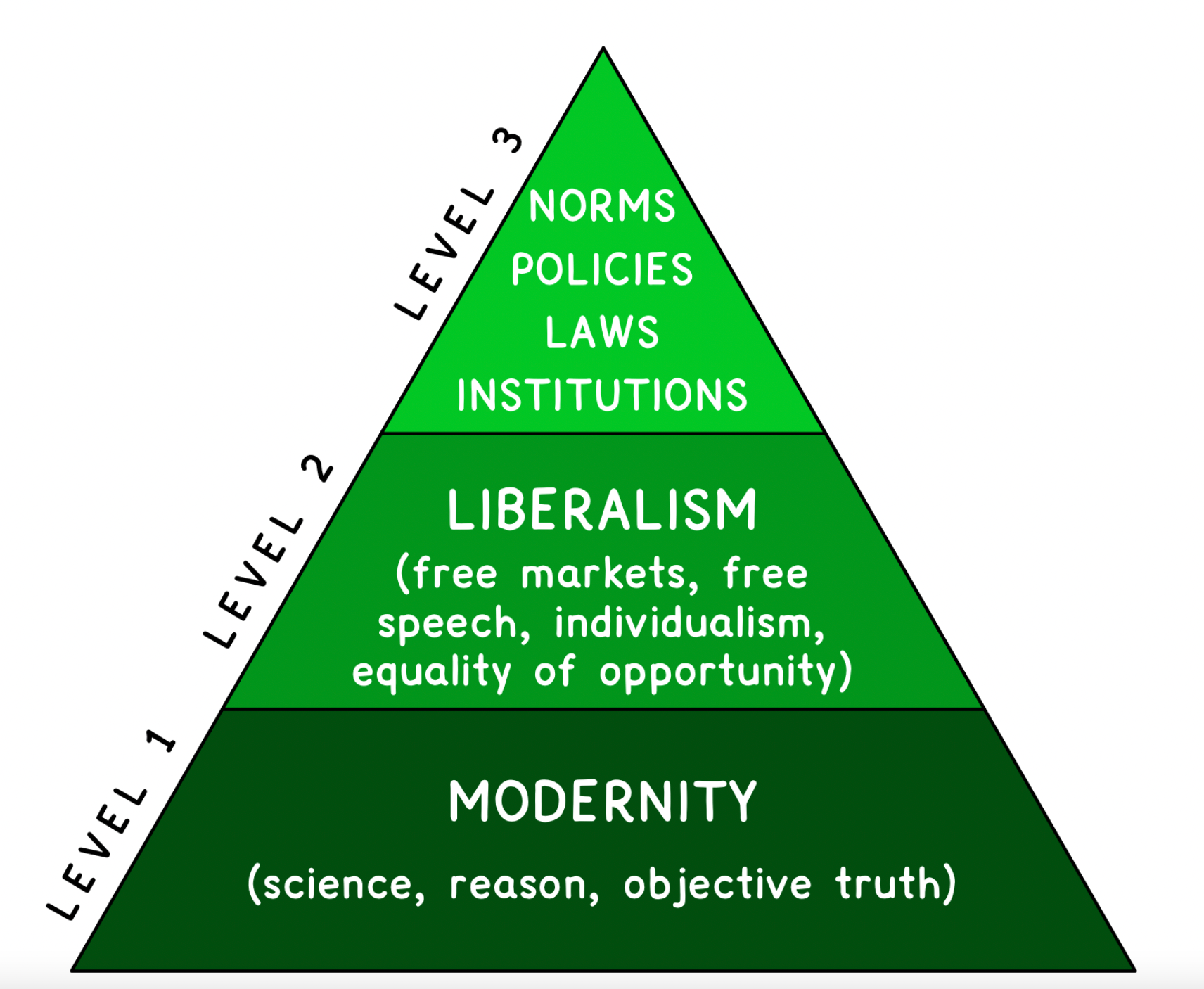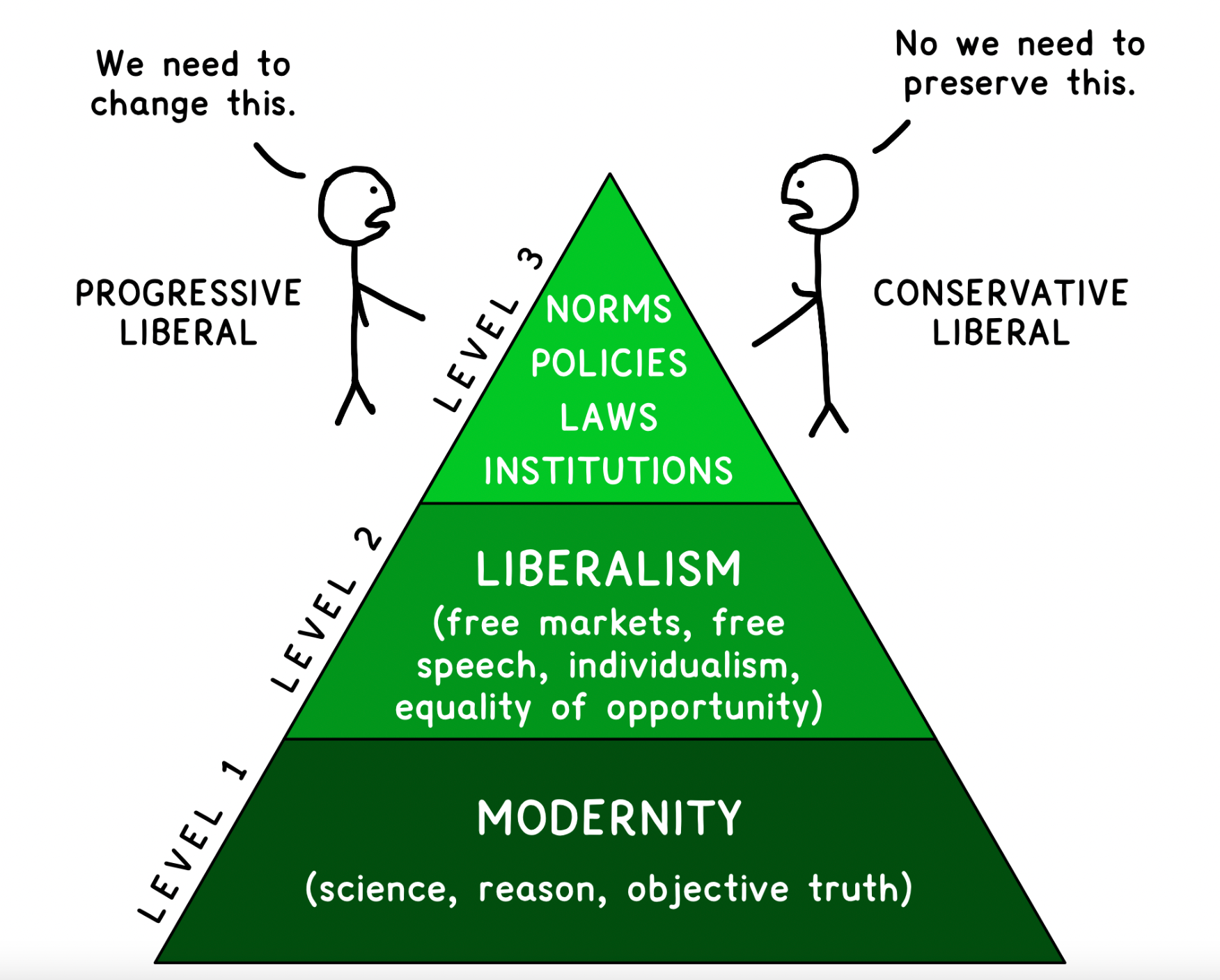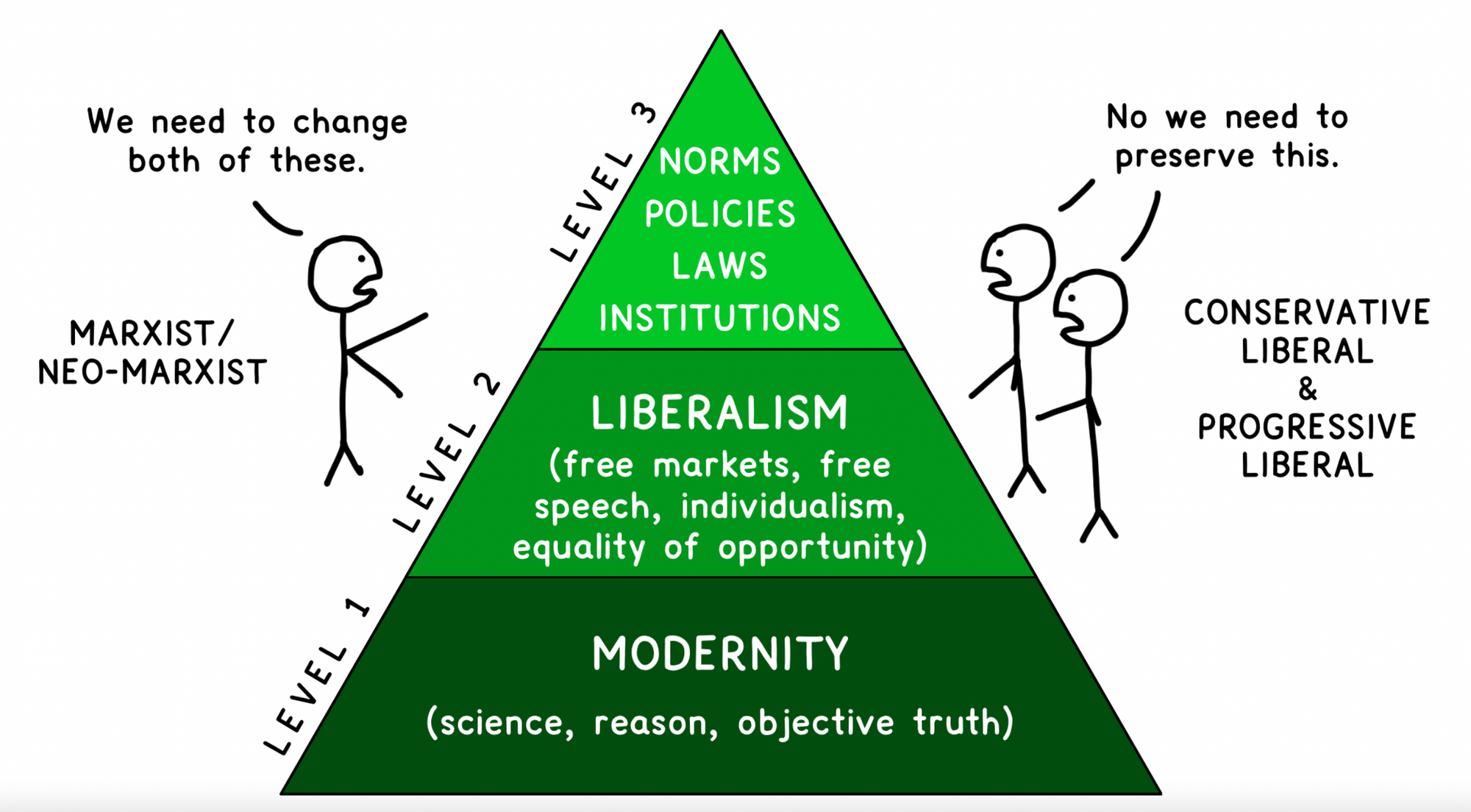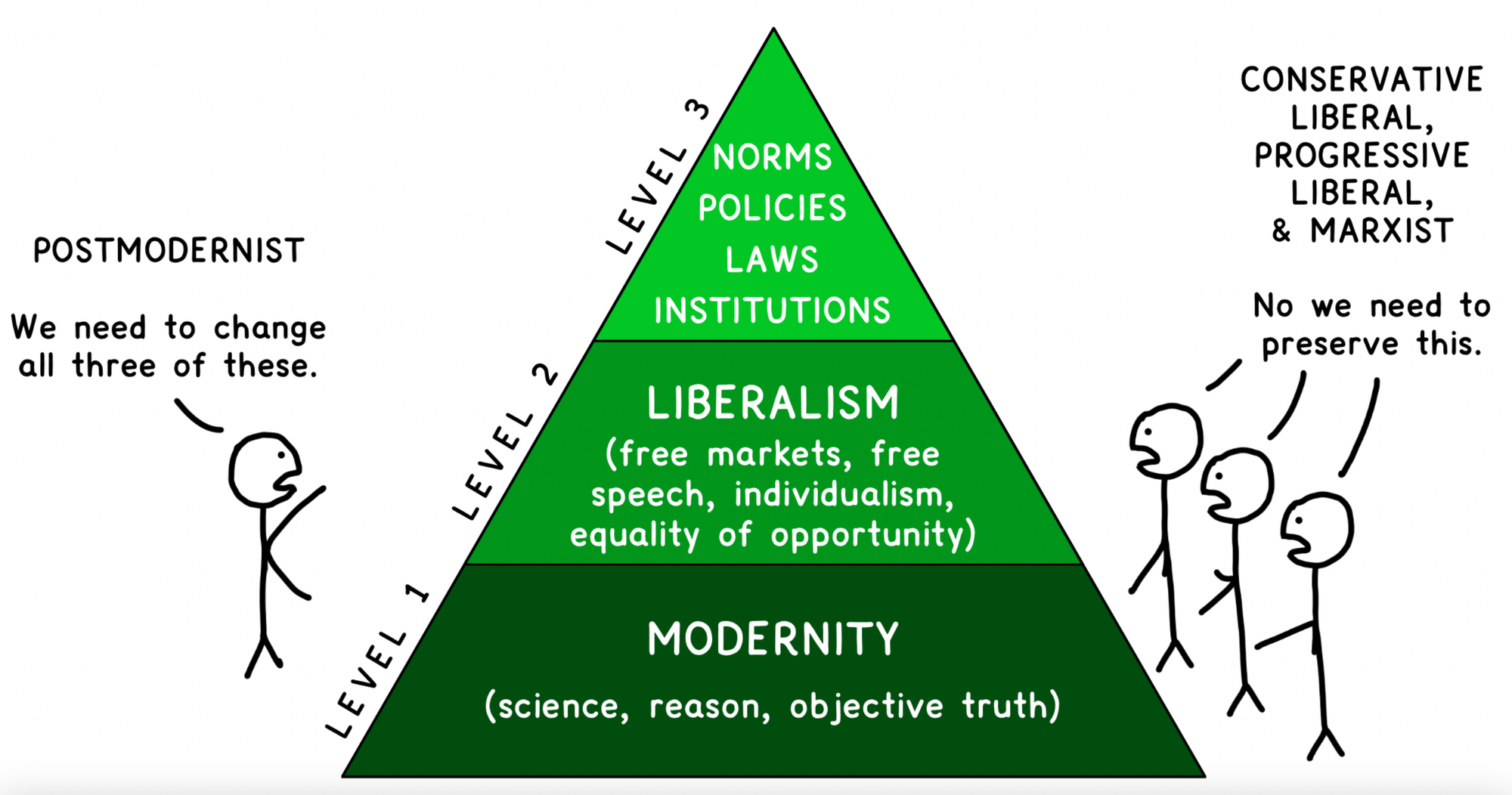On the liberal pyramid
This post is part of a series on Tim Urban’s book, What’s Our Problem? a self-help book for societies.
--
In the post on Power Games and Liberal Games, we discussed how the Enlightenment ushered in a new way for human societies to function, with a focus on human rights and freedoms. This is what we refer to as liberalism today.
To explain some of the challenges with today's culture war, Urban uses a pyramid to represent a modern liberal society:

At the base level (Level 1) are concepts that we often take for granted: science, rationality, and the idea of objective truth. Above that (Level 2) are the core principles of liberalism: individual rights, equality of opportunity, free speech, the rule of law, and market economies. At the very top (Level 3) are the laws, institutions, norms, and policies that are meant to preserve the lower-level principles.
Historically, progressives and conservatives have clashed over Level 3. Progressives believe that Level 3 is rife with problems that conflict with the principles of Levels 1 and 2. To effect change, they use tools like scientific research and free speech to make policy changes, pass new laws, repeal old ones, and sometimes overhaul institutions. Importantly though, both progressives and conservatives are "small-l liberals" i.e. they believe in the ideals of liberalism.

More recently, cultural clashes have shifted to levels 1 and 2, which form the foundation of liberal societies. The roots of this change lie in the beliefs of Marxism and post-modernism. Marxists believe that liberal ideals, such as free markets, are fundamentally flawed and serve only as a mechanism for the ruling class to oppress the working class.
Neo-Marxism and postmodernism build on this idea by suggesting that dominant groups in society maintain their power not only through economics and politics, but also through language, science, morality, and any other available tools. Proponents buy into the theory of false consciousness—that people lack the understanding or awareness to recognize they are being exploited by a dominant class.


Personally, I find this perspective deeply cynical and unproductive. It suggests that people are incapable of thinking for themselves and deciding what is good or bad for them. But I’m open to the idea that I might be missing something and have an incomplete understanding of post-modernist values.
Regardless, grappling with these ideas, which are usually confined to academic settings, can be useful. As we observe social justice movements and counter-movements, thinking about the liberal pyramid can provide some clarity and nuance, as opposed to the binary, simplistic depictions often seen in the news.